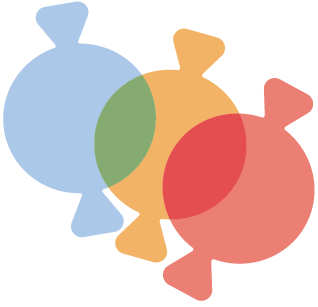The Power of AAC and Feature Matching: Unlocking Potential
There are hundreds of different AAC tools with varying features available to meet the unique needs and skills of each individual who has complex communication needs. However, selecting an appropriate AAC tool for individuals requires a systematic approach to ensure that it meets the needs of the individual now and in the future (Gosnell et al., 2011).
One key aspect of successful AAC assessment and implementation is feature matching, a process that tailors AAC systems to meet the specific needs and abilities of everyone.
Feature matching is a crucial step in the AAC assessment process. Feature matching is a process in which the team gathers information about the communicator and the environment based on the participation model that relates to AAC use and matches this information to features of the AAC system (Beukelman & Mirenda, 2013).
- Various methods are used in dynamic assessment to gather information including questionnaires, document review, interviews, observation, engagement in natural activities, conversation, play, and trial with various AAC strategies and tools.
- The AAC must gather information and identify the features needed in an AAC system and match systems to the feature list for each communicator, or else they may be creating access barriers that could have been avoided.
Feature matching is a personalized approach to selecting an AAC tool. It ensures that the chosen AAC system maximizes the communicator’s potential for communication and language skill development.
- Feature matching is the opposite of identifying a system and fitting it to the communicator.
There are five key components of feature matching (McNaughton & Light, 2013):
- Communication Mode:
- Determining whether the individual is best suited for unaided communication (e.g., gestures, sign language) or aided communication (e.g., speech-generating devices, AAC apps).
- Access Method:
- Identifying the most appropriate access method based on the individual's motor abilities. This may involve touchscreens, eye gaze, switches, or other input methods.
- Vocabulary and Symbols:
- Customizing the vocabulary and symbols within the AAC system to match the individual's communication needs and language level. This includes prestored phrases and core and fringe vocabulary to support a range of communication functions.
- Language Representation:
- Considering the individual's language and cognitive abilities when selecting the representation of language within the AAC system. This may involve choosing between symbols, pictures, or text.
- Voice Output:
- Selecting a voice output that aligns with the individual's age, gender, and personality. Customizable voice options contribute to a more authentic and engaging communication experience.
Feature matching not only ensures that the evaluating clinician recommends an AAC tool provides the communicator with a reliable method of communication, but it also positively impacts the AAC implementation process and the communicator’s use of the AAC tool.
There are four overarching benefits of feature matching (Binger & Light, 2007):
- Increased User Engagement:
- Feature matching enhances engagement by providing an AAC system that aligns with the communicator’s preferences, making communication more enjoyable and meaningful.
- Improved Communication Efficiency:
- A personalized AAC system allows for quicker and more efficient communication, as the communicator can easily access the language they need to convey their message.
- Enhanced User Independence:
- By matching AAC systems to individual needs, communicators gain a greater sense of independence and autonomy in their communication.
- Greater Long-Term Success:
- Feature matching contributes to the long-term success of AAC implementation by adapting to the communicator’s language and communication skills as they develop over time.
AAC tools and strategies, combined with thoughtful feature matching and effective implementation, empowers individuals with complex communication needs to actively engage in all areas of life.
- The feature matching process ensures that generic AAC systems become powerful tools that align with the unique characteristics of each communicator, fostering a more inclusive society. As technology continues to advance, the future holds even greater possibilities for refining AAC solutions and expanding the horizons of communication for individuals of all abilities.
References
Beukelman, D. R., & Mirenda, P. (2013). Augmentative and Alternative Communication: Supporting Children and Adults with Complex Communication Needs. Paul H. Brookes Publishing Company.
Binger, C., & Light, J. (2007). The effect of aided AAC modeling on the expression of multi-symbol messages by preschoolers who use AAC. Augmentative and Alternative Communication, 24(1), 1-12.
Gosnell, J., Costello, J., & Shane, H. (2011). Using a Clinical Approach To Answer “What Communication Apps Should We Use?” Perspectives on Augmentative and Alternative Communication, 20(3), 87–96. https://doi.org/10.1044/aac20.3.87
McNaughton, D., & Light, J. (2013). The iPad and Mobile Technology Revolution: Benefits and Challenges for Individuals who require Augmentative and Alternative Communication. Augmentative and Alternative Communication, 29(2), 107–116. https://doi.org/10.3109/07434618.2013.784930
